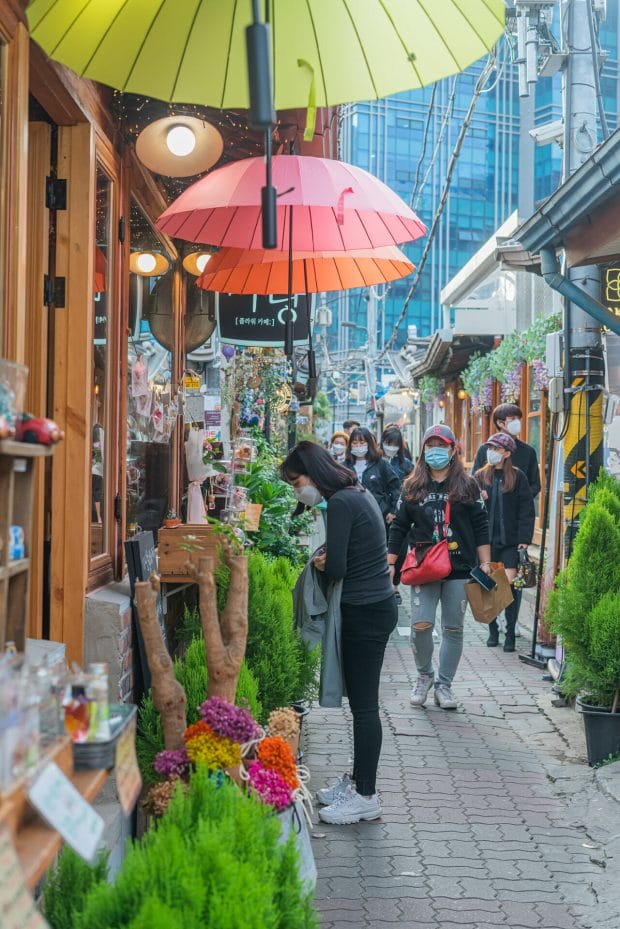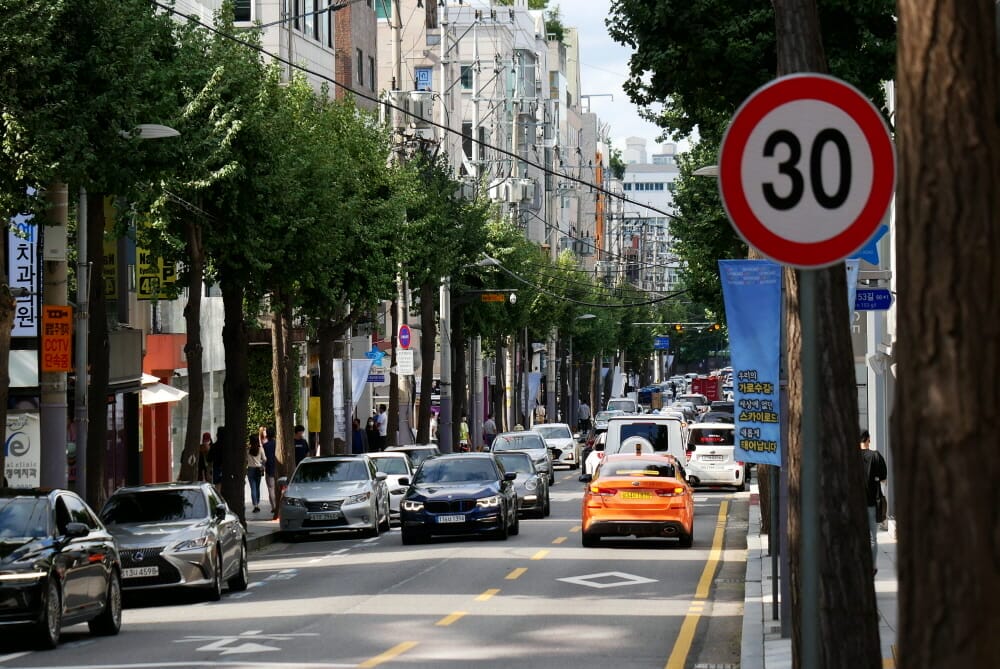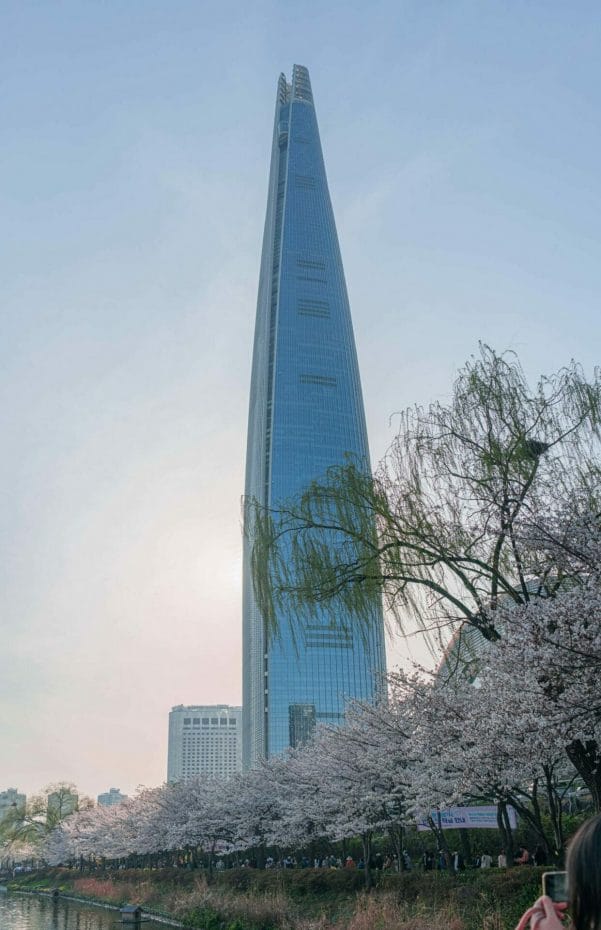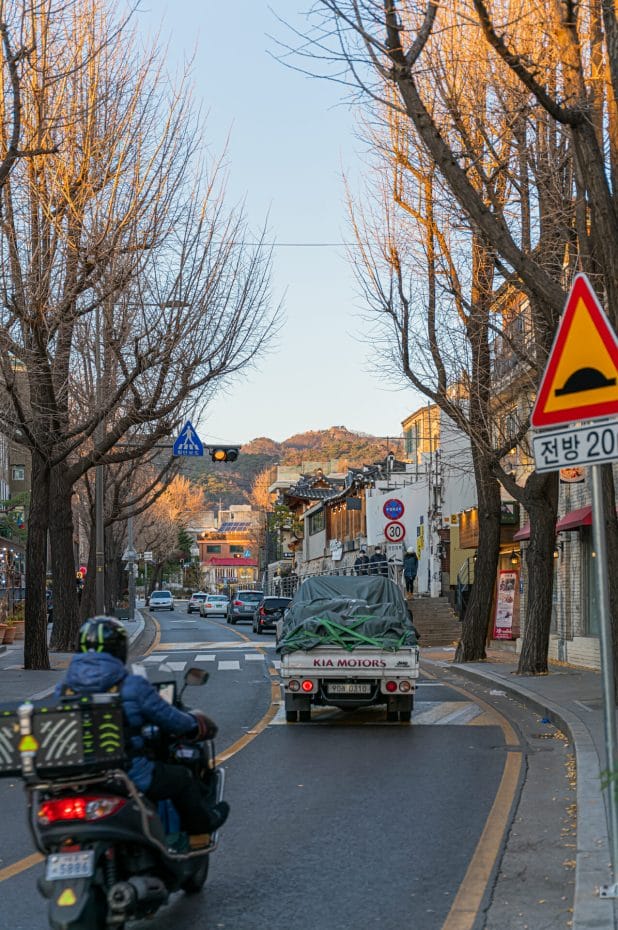16 Overlooked Neighbourhoods in Seoul – How Many Have You Visited?

Myeongdong, Hongdae, Gangnam, and Dongdaemun. If you’ve ever visited Seoul before, or you’re planning a trip, you’re likely already very familiar with these popular neighbourhoods in Seoul. However, while these famous areas get the majority of the attention, there are also many neighbourhoods in Seoul that, while not as famous, are equally worth visiting.
Even though I’m not a fan of the aforementioned neighbourhoods (they’re crowded, very loud, and often overpriced), I think they’re worth visiting. They’re some of the most iconic areas in South Korea’s capital, and this alone makes them easy recommendations to visit when you set foot in Korea.
However, alongside these famous and highly-trafficked neighbourhoods, many more areas in Seoul are worth your time and attention. In this article, I want to delve deeper into lesser-known neighbourhoods and discuss why they are worth visiting. I will also discuss some of the more popular areas, though, as they are worth visiting too.
Ideally, we’d have a chance to visit every neighbourhood in Seoul. Unfortunately, this isn’t realistic for many as you can easily spend a day or two in each area. As such, I recommend visiting a good balance of popular and touristy neighbourhoods and quieter, off-the-beaten-path locations.
With that out of the way, let’s dive straight into one of my favourite places in Seoul and one that I highly recommend you visit!
This article contains affiliate links. Affiliate links provide me with a percentage of purchases made from links on this page. This comes at no extra cost to you – for more information, please refer to my affiliate disclaimer.
1. Ikseondong

Image credits: I.Seoul.U
Ikseondong isn’t exactly a hidden gem or an overlooked neighbourhood – at least not to locals. Yet, despite this area being unique and exciting to explore, I rarely find it on travellers’ itineraries. Why is this? I’m not sure because Ikseondong is easily one of my favourite neighbourhoods in Seoul (if not my favourite!).
What makes Ikseondong so unique is the rather unusual mix of traditional buildings housing modern and hip venues. From the outside, the neighbourhood looks straight out of the Joseon Dynasty, with hanok houses lining the streets. However, upon closer inspection, you’ll see that visitors to the area are primarily young and dressed to impress.


This is because Ikseondong is home to some of Seoul’s most luxurious cafes and restaurants. While the hanok buildings give the impression of an older neighbourhood from the outside, as soon as you step inside, you’ll quickly realise just how modern Ikseondong is.
As mentioned, Ikseondong isn’t exactly cheap. The cafes, restaurants, bars and stores here won’t break the bank, but they’re not exactly casual dining. If you plan to eat or drink in the area, be prepared to spend a bit more. Thankfully, even if you don’t want to spend, Ikseondong is a ton of fun to explore simply due to the great atmosphere of the location.
2. Hyehwa

Hyehwa is another neighbourhood in Seoul that is well-known by locals but rarely appears on any travel itinerary. While it’s located only one metro stop from Dongdaemun, it receives no attention or crowds that the shopping mecca attracts.
Hyehwa is primarily a student area, which means a few things. Firstly, the area’s demographic is generally young and often female (it’s located close to a couple of women’s universities). Secondly, most stores and restaurants in this area are affordable. Finally, there are many entertainment options; whether you want to sing your heart out, enjoy a movie, or enjoy nature, you can do them here.


If you want to enjoy some unique cafes, Hyehwa has you sorted. Some of my favourite cafes are in this neighbourhood, including some flower cafes and some of the best hand-drip coffee stores I’ve found. Restaurant-wise, Hyehwa also excels as it has a lot of international food options in case you’re missing home!
If you’d prefer to enjoy the outdoors, Naksan Mountain is nearby, and a short walk will provide you with some of the best views of northern Seoul. The mountain is stunning if you’re visiting in spring or autumn! However, the views are worth it even if you’re visiting in summer or winter.
Finally, if you want to enjoy the nightlife, Hyehwa has a decent range of options. While it doesn’t have anywhere near the selection of the ‘party districts’ such as Itaewon and Hongdae, it has a moderate selection because it is a university area.
3. Sungshin Women’s University

Sungshin Women’s University was the neighbourhood I called home for around five years. It’s an exciting area reminiscent of Hongdae, albeit with less selection and far fewer crowds. The best part? Sungshin is close to Dongdaemun and Hyehwa, so it’s easy to explore on the day.
Sungshin Women’s University Station is aptly named as it services one of Seoul’s most prominent women’s universities. Once again, this means students frequent the area, so it’s affordable and trendy, and many entertainment options exist.


If you are a younger woman looking to do some shopping, this is a great place to visit. Many clothing stores will be stocking reasonably priced clothing in the most up-to-date and trendy styles. Unfortunately, men won’t find many clothing options here, and most stores only have a small men’s section, if any.
While Sungshin does lack nature, it makes up for this with a fantastic selection of restaurants serving food at affordable prices. You can find many options here for local or international food. On top of this, the area has a ton of cafes serving tasty coffee (and other drinks), such as Kaldi Kaffa!
You won’t need as much time to explore the Sungshin neighbourhood as you will in areas such as Hyehwa. As such, I recommend dedicating a morning or afternoon to visiting this trendy area. While you could spend an entire day here, I don’t think many people will need to stay more than a few hours.
4. Gwanghwamun

Gwanghwamun is famous for attractions such as Gyeongbokgung Palace and Cheonggyecheon Stream. However, many people don’t realise that the area also has a ton of other attractions. In fact, it has so many attractions that I wrote a post about it just the other day!
If you want to learn about the culture and history of South Korea, there is no better neighbourhood in Seoul to visit. Alongside historically important structures such as Gyeongbokgung, Changdeokgung, and Jogyesa, you’ll also find a range of museums dedicated to teaching Korean history.
I believe everyone visiting Korea should take some time to learn about how modern Korea came to be, and for this reason, I believe Gwanghwamun is a must-visit for everyone coming to Seoul. There’s so much to learn about the history of the peninsula, and this is the best place to do so!


Once you’re done learning, there are many more places to explore. Within a short walking distance, you can find Bukchon Hanok Village, Insadong, Cheonggyecheon, and more! This is easily a neighbourhood where you can spend a day or more.
If you require some Korean souvenirs to take to your friends and family back home, Insadong has you sorted. You’ll be able to find almost anything imaginable (as long as it’s related to Korean history) on the streets of this fascinating area.
5. Ewha Women’s University

The second women’s university neighbourhood to make it on this list, Ewha is here for many of the same reasons as Sungshin – except on a bigger scale. If you want to check out the latest fashion, there’s no better place in Seoul. Looking to buy some clothing? Even better, as Ewha has an almost unimaginable selection.
While clothing stores are located around the neighbourhood, most of the good deals are to be found in the tents and pop-up stalls. Depending on what day you visit, the stalls could be packed, and with the alleyways being relatively small, I recommend visiting on a less crowded day if possible.

While there are restaurants and cafes around the area, the nearby neighbourhoods of Hongdae and Sinchon have more variety. While this isn’t to say the Ewha area has nothing interesting – it has some fabulous cafes too! – Hongdae and Sinchon have so much more choice and I recommend those areas if you want to dine.
If you’re in the area, it’s worth exploring Ewha Women’s University itself if you have time. The university campus is breathtaking, and you’ll be hard-pressed to find a prettier photo spot than Ewha during spring or fall. If you want to visit the university, this is best done on weekends or vacations when fewer students are around.
6. Sinchon

Since I mentioned it, I guess I have to discuss it, right? Sinchon is yet another student neighbourhood in Seoul, but unlike the other areas we’ve discussed so far, Sinchon is very much nightlight-focused.
Located next to Hongdae, Sinchon is almost a continuation of the highly popular party district. During Friday and Saturday nights, the area will be extremely lively, and all the bars and restaurants will be either full or very busy.
Despite being busy, Sinchon doesn’t attract the same crowds as Hongdae, meaning it is a great place to enjoy the nightlife of Seoul if you don’t want to experience the crazy crowds that can be found in Hongdae. There’s still a great range of bars, so you won’t miss out on much.
During the daytime, Sinchon is still lively but not quite as much so. There are a ton of cafes, lots of shopping, and even some arcades and other forms of entertainment. Most importantly, perhaps, is that Sinchon is extremely easy to reach – it’s within walking distance of Hongdae.
7. Hapjeong

ID 112677077 © Yooran Park | Dreamstime.com
Located on the opposite side of Hongdae to Sinchon, Hapjeong has an entirely different vibe. This area feels far more relaxed and calming due to the presence of the Han River, which sits nearby. The streets are quieter, and few people seem to spill over from Hongdae to Hapjeong.
Hapjeong is not a student area, and the prices reflect this. Cafes, bars, restaurants and even stores in the area will be a bit more expensive, and it can be hard to find affordable options at times. However, while you will be paying a bit more, I generally find the quality of the food and drinks to be better in Hapjeong.

ID 218748533 © In Sung Choi | Dreamstime.com
During summer (or any warm day), Hapjeong is a fantastic place to visit. You can enjoy some coffee before walking to the nearby Han River parks. From here, you can either picnic on the banks of the river or walk as far as you want; I mean it! The river walkways go for tens of kilometres in either direction.
From Hapjeong’s Han River parks, you will get stunning views along the Han River. Yeouido is quite close, and you can see a range of famous buildings, such as the 63 Building and the Blue House. These views, combined with some good weather, make Hapjeong an enjoyable place to spend a summer’s evening.
8. Apgujeong

If you’re in the market for luxury goods, there’s no better place to find them than Apgujeong. Currently, Seoul’s most expensive neighbourhood, Apgujeong, houses stores from all of the major luxury brands. It was also the location of the first Apple Store in Korea, although five branches are now located throughout the city.
While every upper-class mall in Korea will house luxury brand stores (primarily The Hyundai), Apgujeong has most flagship stores meaning there is a much greater selection here.
Besides the luxury stores, Apgujeong is a fun neighbourhood to explore simply because it has a very different vibe from the rest of the capital. Just by walking down the streets of Apgujeong, you can feel wealth – people will be dressed exceptionally well, and luxury and hypercars will regularly pass you on the street.

Due to the clientele Apgujeong attracts, the streets are clean and beautiful. There aren’t many places in Seoul where you will find well-manicured trees lining the streets, but Apgujeong is one of them. For this reason, it’s a place I recommend visiting!
If you are interested in dining or cafes, plenty are around the Apgujeong neighbourhood. Naturally, they are a bit more pricey than in other areas of Seoul, but they aren’t outrageously priced. I’ve enjoyed lovely meals in Apgujeong for as little as $20 per person.
9. Konkuk University


As it turns out, I feel like many university areas are quite underappreciated by tourists and visitors to Seoul. However, I feel this is true because they all get overshadowed by Hongdae, which many people visit and then don’t see the need to visit other university areas.
Konkuk University is located on the eastern side of Seoul, and the area around it is very lively – especially on weekends when the area really awakens. There are many similarities between Hongdae and Konkuk University (also called ‘Kondae), and I feel like Kondae is almost a smaller version of Hongdae.
At face value, this might seem like a knock against Kondae. Why visit this neighbourhood if Hongdae is a bigger, better version? Well, because despite Hongdae being bigger, I don’t think it’s necessarily better. Kondae has far more manageable crowds and still offers a fantastic selection of dining and shopping.
One word of caution when visiting Kondae – expect many things to be closed if you visit earlier in the day. Even if you’re visiting after noon, many places won’t open until 6 pm. I visited Kondae for lunch and felt very limited in my dining choices.
If you visit in the late afternoon or early evening, you won’t encounter this problem. As such, I highly recommend visiting later in the day because there are better neighbourhoods in Seoul to spend the daylight hours.
10. Mullae Arts Village

Looking for something on the unique side? Well, then, Mullae Arts Village should be on your radar. This neighbourhood in Seoul was originally an industrial area, housing many factories, particularly metalworks. Over time, people began to move to the area to benefit from the low rent prices due to it being considered an undesirable location at the time.
Over the past few decades, the area has completely transformed and is now home to a range of art in murals, sculptures and architecture. Despite a few factories still in use, cafes and galleries have popped up in the area, and it’s now a fascinating juxtaposition of industry and arts in one area.
In no other Seoul neighbourhood can you find cafes located in old factories. Despite sounding unhygienic or creepy, these cafes are modern with clean facilities. They’re also very trendy, often serving new types of food and drinks that can’t be found elsewhere.
Like Ikseondong, Mullae Arts Village is worth exploring whether you want free entertainment (walking the streets) or want to make the most of the intriguing and creative cafes and restaurants.
Also worth noting is that Mullae has a few bars. If you’re interested in checking out some of the trendiest nightlife locations in the capital, you’ll want to visit after 6 pm as many bars won’t open until the early evening.
11. Yeonnam Dong

ID 246881404 © Sanga Park | Dreamstime.com
Okay, let’s say all you’re interested in is food. If that’s the case, the best neighbourhood in Seoul is undoubtedly Yeonnam Dong. This neighbourhood thrives due to its vast range of European and Asian dining options.
Yeonnam Dong is located close to Hongdae but has an entirely different clientele. Where Hongdae is full of youth and students looking to shop, eat and drink, Yeonnam Dong attracts a more mature crowd looking to enjoy exquisite food and beverages.
Walking through the neighbourhood streets, you will quickly realise how different it feels from other areas in Seoul. Some artisanal cafes and restaurants require reservations well in advance. On top of this, there are also some exciting hidden gems, such as second-hand bookstores and antique stores.
Cafes and restaurants in Yeonnam Dong are a bit more expensive than in other areas, but they aren’t as expensive as in fancy neighbourhoods such as Apgujeong and Sinsa. That said, you will want to check prices beforehand if you’re on a budget.
The highlight of Yeonnam Dong is the street aptly named ‘Little Chinatown’. On this street, you can find a wide range of Chinese eateries serving some amazing food. While it’s not really ‘Chinatown’ and rather just a single street, it’s well worth checking out because some delectable dishes are on sale!
12. Seongsu Dong

Image credit: I.Seoul.U
With a similar background to Mullae Arts Village, Seongsu Dong was once an industrial area on the outskirts of Seoul. As the city has expanded around the neighbourhood, the area itself has undergone major changes and is now a top spot for younger Koreans to hang out in.
While it is similar in many ways to Mullae, Seongsu may be more attractive to some people due to the workshops and studios housed in the area. You can find everything from woodworking workshops to art studios, and this is not to mention the stunning murals lining the streets in some areas.
Of course, this is Seoul, so Seongsu also houses a wide range of hip cafes. Most of the cafes in the area are located within old industrial buildings giving the area an almost rustic exterior with an ultra-modern interior. It’s a fascinating juxtaposition and one that you should see for yourself!
Seongsu Dong is a very popular neighbourhood with locals, but travellers to Korea almost always overlook it. This is slowly beginning to change, but it’s still somewhere that I feel deserves more attention. If you get the chance, make sure to check it out!
13. Jamsil

If you don’t care about trends, history or culture and instead want to visit the pinnacle of modernity, Jamsil is the place to go. While Gangnam is often considered to be the centre of modern Seoul, I would argue that Jamsil has surpassed it with the building of Lotte Tower and Lotte World.
Obviously, these two attractions dominate Jamsil, and they will already be on many travel itineraries. If you’re considering visiting, go for it! Lotte World is a breathtaking (primarily) indoor theme park that felt even more magical than Disney Land, and Lotte Tower is somewhere you can shop until you drop.
However, looking past these two attractions, Jamsil has much more to do! If you take the subway a stop or two further, you will find some awesome cafes, such as Seoulism, which provides some of the best views in the city. If you’re looking to enjoy nature for a while, Seokcheon Lake is located right next to Lotte Tower, and it has a nice walking circuit.


If you’re visiting during spring, I would highly recommend visiting the area to see Seokcheon Lake. It’s by far one of the best places to see cherry blossoms in the city, and you won’t find many better views without leaving the capital.
Another attraction of this Seoul neighbourhood is the underground market located in the Jamsil subway station. The market houses hundreds of stalls selling clothing, shoes, accessories, and even mobile phones! There’s a ton of selection, and you can easily spend a few hours shopping in the market alone!
14. Samcheong Dong

Samcheong Dong is a neighbourhood hidden behind Bukchon Hanok Village and Gyeongbokgung Palace. Honestly, the first time I found Samcheong Dong, it was entirely accidental! I was exploring Bukchon and looking for photo spots, and I entirely coincidentally walked straight into the heart of this trendy Seoul neighbourhood.
Samcheong Dong is unique because it shares the traditional architecture of the hanok village next door. Unlike Gwanghwamun Square, which shows Gyeongbokgung flanked by high-rise apartments and offices, Samcheong Dong shows the palace bordering a traditional-looking neighbourhood.


Of course, the area is only traditional in terms of looks. Once you set foot inside the cafes and restaurants, you’ll quickly realise they are hip and trendy. The same can be said for the stores and galleries – from the outside, they appear straight out of the Joseon Dynasty, but inside, they sell contemporary artisanal goods.
Samcheong Dong isn’t a neighbourhood where you can spend much time… At least, I can’t! Instead, I prefer to explore the surrounding areas of Insadong and Gwanghwamun before retiring to this area for a coffee. It’s a great way to end a day of exploring before heading back to the hotel for a rest!
15. Soedaemun

Technically, Soedaemun is a Seoul district that houses many neighbourhoods, such as Ewha Women’s University and Sinchon. However, when I talk about the Soedaemun neighbourhood, I am referring to the area directly around Soedaemun Station.
For some reason, Soedaemun is very rarely visited by tourists. However, it’s one of the most important places in Seoul from a historical standpoint. In this neighbourhood, you’ll find the Soedaemun Prison History Hall, a museum dedicated to preserving the history of the Japanese Occupation of Korea.

While the prison is a sombre place, I recommend visiting because the occupation profoundly impacted South Korea. Even today, the history discussed in his museum continues to hold a significant cultural meaning. One that even guides decisions and policies.
Alongside the prison, you can visit Dongnimmun Gate, a gate built to symbolise Korean independence. Again, this gate is worth visiting to learn more about the background of the Republic of Korea we know today.
On top of the historical attractions this neighbourhood in Seoul offers, Soedaemun also has a few different mountains to climb. While they vary in difficulty and length, some can be sumitted in under an hour and afford stunning views of the city!
16. Yongsan

Yongsan is another district in Seoul, so when I refer to Yongsan in this context, I am discussing the area directly around Yongsan Station. This is another of my favourite neighbourhoods and one where I spent many hours.
The reason I love Yongsan so much is that it houses Seoul’s largest electronics market. Whether you’re looking for computer components, a new phone, a washing machine, or a pair of headphones, Yongsan has the largest selection in Seoul. The one exception is cameras; you are better off visiting Namdaemun for digital cameras and Chungmuro for film cameras.
Yongsan Electronics Market has a few different areas, and you can easily find stores for both secondhand parts and devices and new ones. While the prices aren’t exactly cheap (electronics in Korea are not as cheap as you would think!), they are some of the best prices you’ll find in the country. Furthermore, as many of the vendors located here are the same as you’ll find on Gmarket and Coupang, the prices tend to mirror online domestic prices.

Besides the Electronics Market, Yongsan has some attractions, but I don’t recommend visiting the area unless you have a specific purpose there. It’s primarily commercial and isn’t known for its nice dining or shopping options.
If, on the other hand, you’re in the market for some electronics or need to replace that one pesky cable that you can’t find, Yongsan is the place for you. It’s a wonderland for anyone who likes digital devices (or even some analogue devices) and therefore is a neighbourhood worth visiting!
